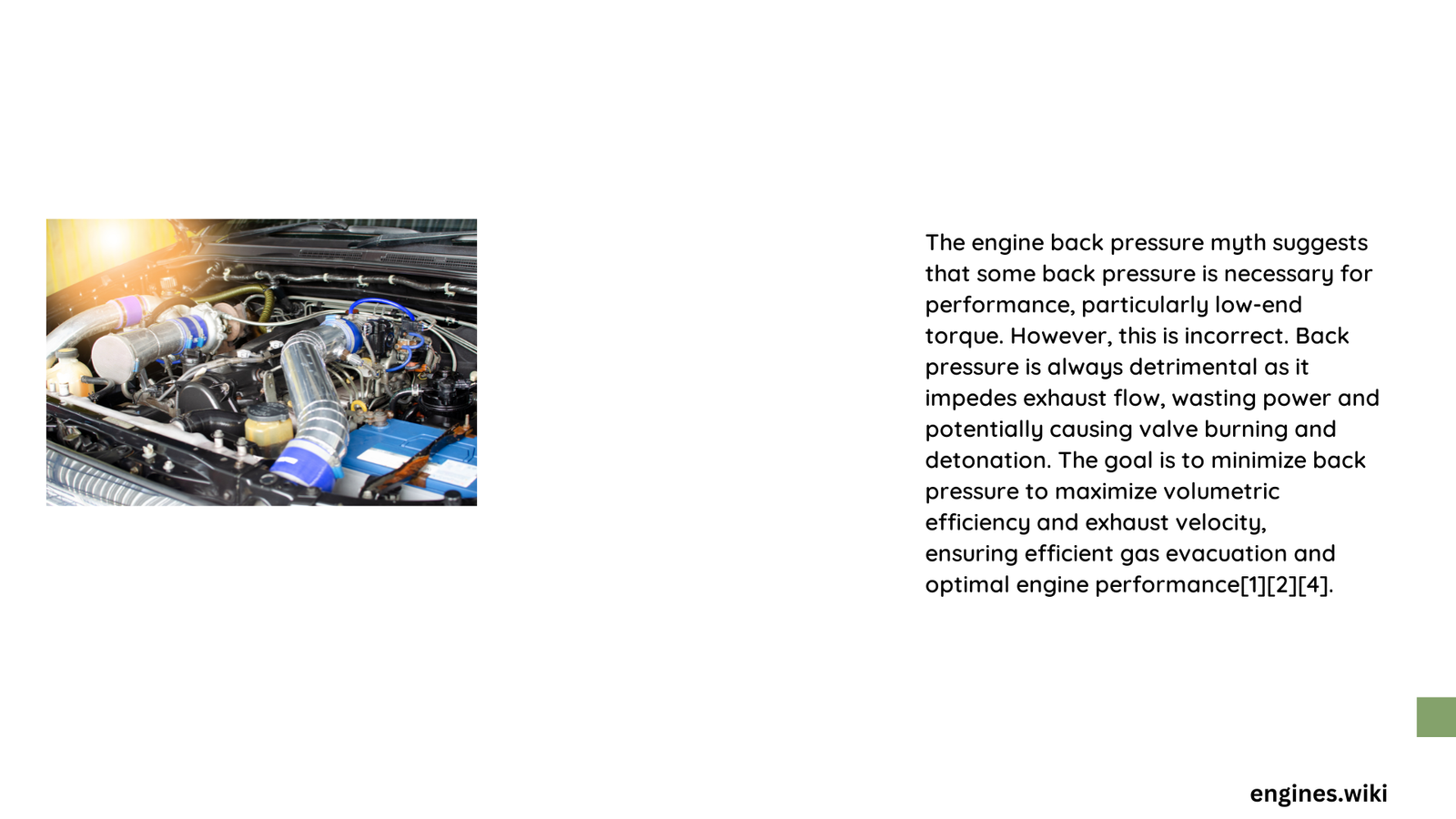Engine back pressure represents a complex automotive phenomenon often misunderstood by enthusiasts and mechanics alike. Contrary to popular belief, excessive resistance in exhaust systems can dramatically reduce engine efficiency, power output, and overall performance. Automotive engineers have long studied the intricate relationship between exhaust flow dynamics and engine performance, revealing that back pressure is not a desirable characteristic but a technical challenge to be minimized.
What Exactly is Engine Back Pressure?
Back pressure in an engine refers to the resistance encountered by exhaust gases while attempting to exit the combustion system. This resistance occurs due to:
- Restrictive exhaust components
- Tight bends in exhaust pipes
- Poorly designed muffler systems
- Accumulated carbon deposits
How Does Back Pressure Impact Engine Performance?
| Performance Metric | Impact of High Back Pressure |
|---|---|
| Horsepower | Reduction of 5-15% |
| Fuel Efficiency | Decreased by 2-7% |
| Engine Temperature | Increased by 10-25°F |
Why Do Back Pressure Myths Persist?

Several misconceptions continue to circulate among automotive enthusiasts:
- Myth: Back Pressure Improves Engine Scavenging
- Reality: Efficient exhaust design, not back pressure, enhances scavenging
-
Proper exhaust geometry matters more than resistance
-
Myth: Some Engines Require Back Pressure
- Reality: No modern engine benefits from intentional exhaust restrictions
- Performance engines aim to minimize resistance
Scientific Evidence Against Back Pressure
Researchers from automotive engineering departments have consistently demonstrated that:
- Reduced back pressure correlates directly with improved engine efficiency
- Modern exhaust systems use advanced geometries to optimize gas flow
- Turbocharged and naturally aspirated engines both benefit from minimal resistance
Practical Implications for Vehicle Owners
Vehicle owners should consider:
- Regular exhaust system maintenance
- Professional performance tuning
- Understanding exhaust system design principles
Strategies to Minimize Back Pressure
- Install mandrel-bent exhaust pipes
- Use high-flow catalytic converters
- Select performance mufflers with minimal restriction
- Periodic exhaust system cleaning
Technical Insights into Exhaust Flow Dynamics
Advanced exhaust systems employ sophisticated techniques to manage gas flow:
- Variable geometry turbochargers
- Adaptive exhaust valve timing
- Computational fluid dynamics modeling
Quantitative Performance Improvements
Reducing back pressure can yield:
– 10-15% horsepower increase
– 3-5% fuel efficiency improvement
– Lower exhaust gas temperatures
Expert Recommendations
Automotive engineers suggest:
– Consult professional performance specialists
– Use data-driven approach for exhaust modifications
– Understand vehicle-specific requirements
Conclusion
Understanding engine back pressure requires moving beyond simplistic myths. Modern automotive engineering demonstrates that minimizing exhaust resistance leads to superior performance and efficiency.
